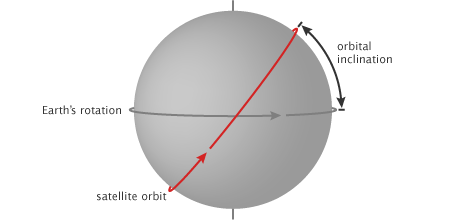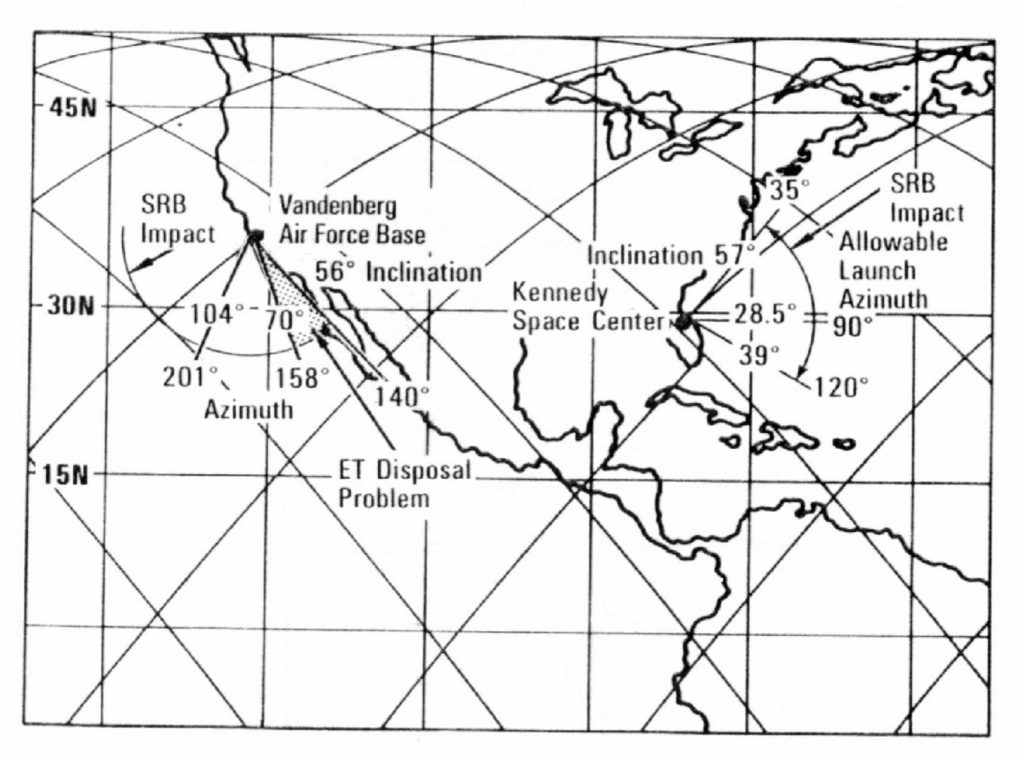16.12.2021
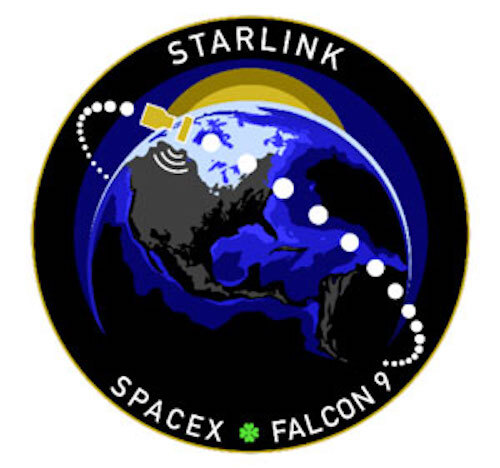
SpaceX Rocket Ready to Launch Second Starlink Satellite Mission from Vandenberg SFB
The Falcon rocket now is aiming for an early Saturday departure
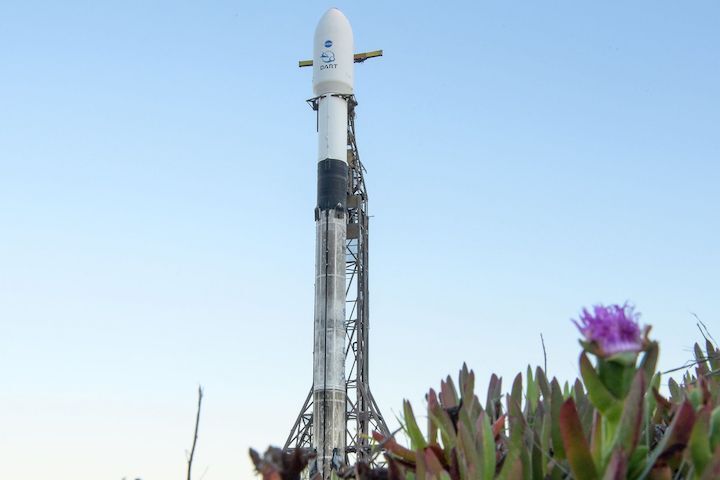
The West Coast’s second set of Starlink satellites could head to space early Saturday morning aboard a Falcon rocket after a one-day delay at Vandenberg Space Force Base.
Liftoff of the Space Exploration Technologies Falcon rocket is scheduled to occur from Space Launch Complex-4 on the South Base, or the area south of Ocean Avenue (Highway 246).
A mariner’s notice issued recently advised boaters to remain out of the area of SLC-4 between 1:16 a.m. and 5:33 a.m. Friday. However, early Thursday morning, the notice was revised to note the delay and new date, with the launch now sete to occur between 12:54 a.m. and 5:11 a.m.
Neither Vandenberg public affairs staff nor SpaceX representatives released the planned launch time as of Wednesday afternoon despite the fact that the rocket launches frequently startle residents uncertain whether it’s an earthquake.
Missions carrying Starlink, also developed by SpaceX, typically have an instantaneous window so that the satellites can be placed into a precise orbit.
The West Coast's first Starlink mission saw 51 satellites head to space aboard the Falcon rocket in September. They joined a constellation with hundreds of others launched from Florida to deliver satellite-based Internet services to people across the globe.
After completing its task, the Falcon rocket's first-stage booster will return to Earth, touching down on the "Of Course I Still Love You" droneship parked in the Pacific Ocean south of the Central Coast.
A landing at Vandenberg can be seen and heard because of sonic booms, but the droneship return most typically doesn't create the same spectacle for Central Coast spectators since it's too far away.
In addition to recovering the used first-stage booster, SpaceX also has started capturing the rocket's payload fairing, or nose cone, after launch.
From the beginning, SpaceX founder Elon Musk has touted reusability as the key tool to reduce time between missions and cut costs for satellite customers.
While access to Vandenberg is restricted, the launch should be visible around the Lompoc Valley and the rest of the Central Coast as the rocket rises, assuming the marine layer cooperates. Locations around the Lompoc Valley also offer views of the launch site, which is visible when looking south of Ocean Avenue (Highway 246).
Popular viewing sites include along Ocean and Central avenues west of Lompoc, the peak of Harris Grade Road, and near the intersection of Moonglow and Stardust roads in Vandenberg Village.
It would be the third Falcon rocket launch since mid-September from Vandenberg.
In addition to the West Coast's first Starlink mission, Falcon carried NASA’s Double Asteroid Redirection Test satellite for planetary defense purposes. Approximately 10 months after the November liftoff, the satellite will attempt to nudge an asteroid to knock it off course to test the method for the future.
Quelle: Noozhawk
+++
SpaceX’s next West Coast Starlink launch is heading to an unexpected orbit
SpaceX has unexpectedly changed the Earth orbit its next Starlink launch is targeting.
Like all planned Starlink launches, the latest batch of satellites will ultimately raise themselves into a circular orbit around 550 kilometers (~340 mi) above Earth’s surface. However, beyond the basic orbital altitude, the mission will be completely different than previously expected.
Before SpaceX released details about the launch, which is now scheduled no earlier than (NET) 1:46 am PDT (UTC-8) on Friday, December 17th, it was believed the mission was called Starlink 2-3, or the third launch of a second ‘shell’ or group of satellites. SpaceX’s initial ~4400-satellite Starlink constellation is distributed into five different ‘shells’ – all with similar orbits between 540 and 570 km. What mainly differentiates each shell is orbital inclination, which refers to the tilt of an object’s orbit around a celestial body.
Contrary to what most expected, instead of the second dedicated Starlink launch for the constellation’s 70-degree shell (“Group 2”), SpaceX’s December 17th launch – known as Starlink 4-4 – will actually carry the third batch of “Group 4” satellites to an inclination of 53.22 degrees. Aside from once again skipping over Starlink 4-2, which has yet to launch for unknown reasons and was already leapfrogged by Starlink 4-3 earlier this month, Starlink 4-4 will also be launching out of SpaceX’s West Coast pad, while all thirty-one other dedicated 53-degree Starlink missions have launched out of Cape Canaveral, Florida.
A 53-degree launch out of Vandenberg Space Force Base, California is unusual because, up to now, it’s been unable to regularly launch to inclinations lower than approximately 56 degrees. Any lower (further east) and the rocket would end up overflying populated areas in Baja California or even the southwest coast of Mexico. For obvious reasons, the US FAA and other countries are not a fan of having what amounts to a high-velocity explosive device fly over populated areas.
The only apparent way SpaceX could launch to 53 degrees from Vandenberg is if Falcon 9 performs a dogleg maneuver several minutes after launch, effectively conducting a (slight) left turn mid-flight. While seemingly simple, even a minor few-degree dogleg maneuver can cost an intuitively large amount of delta-V, potentially significantly reducing the amount of payload a rocket can launch to a given orbit. For Starlink missions, maximizing payload to orbit is perhaps the single most important way (beyond reusability) SpaceX is able to reduce launch costs.
However, according to the prelaunch information SpaceX provided Celestrak, Starlink 4-4 will launch 52 V1.5 satellites into orbit – just one less than an equivalent launch (Starlink 4-1) from the East Coast. If SpaceX only needs to reduce an optimal stack of 53 V1.5 satellites to 52 to pay for Starlink 4-4’s dogleg maneuver, it’s technically only raising the average launch cost per satellite or unit of network bandwidth by less than 2%. That’s not a bad trade given that it could allow SpaceX to expand the number of launch pads capable of supporting the most common Starlink launches from two to three – a 50% increase. At the end of the day, deploying as many mid-inclination Starlink satellites as quickly as possible is likely the fastest way to expand network capacity, add Starlink subscribers, and thus grow revenue.
Quelle: TESLARATI
----
Update: 17.12.2021
.
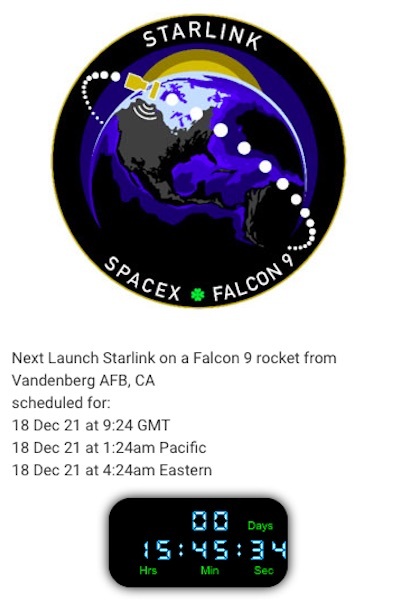
----
Update: 18.12.2021
.
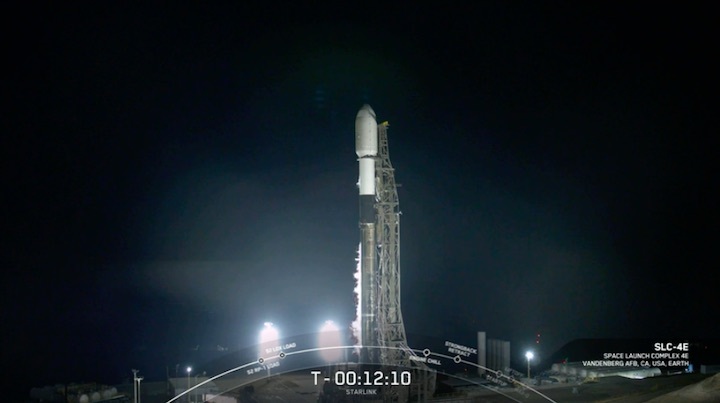
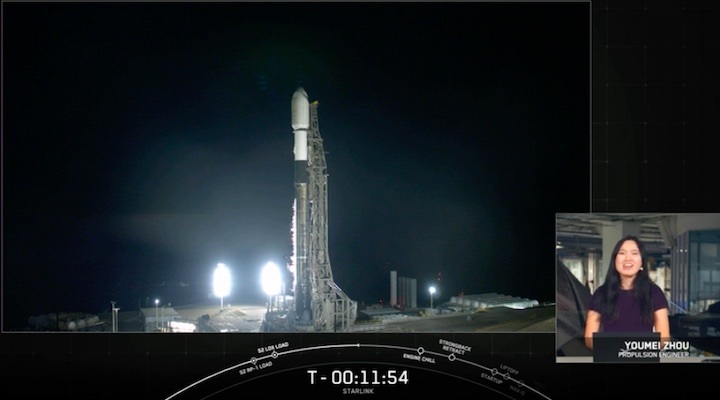
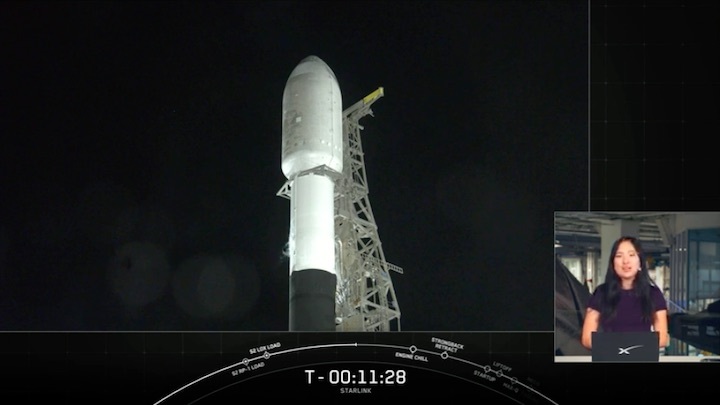
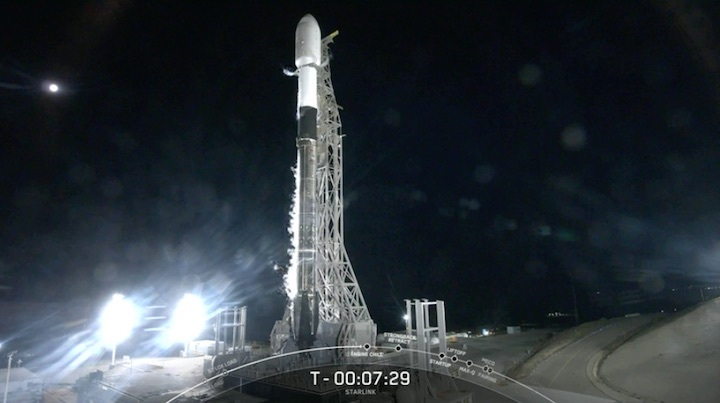

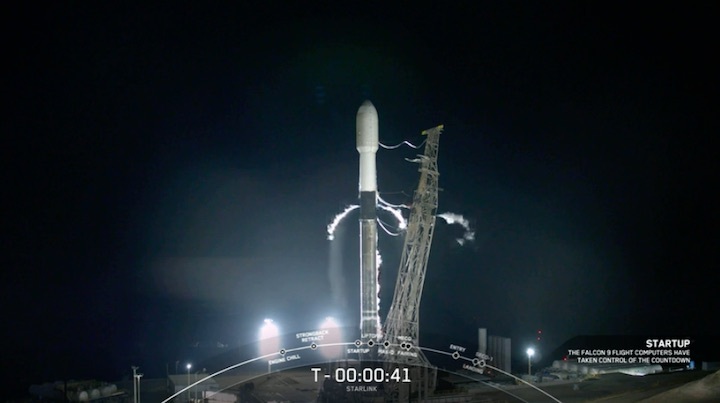
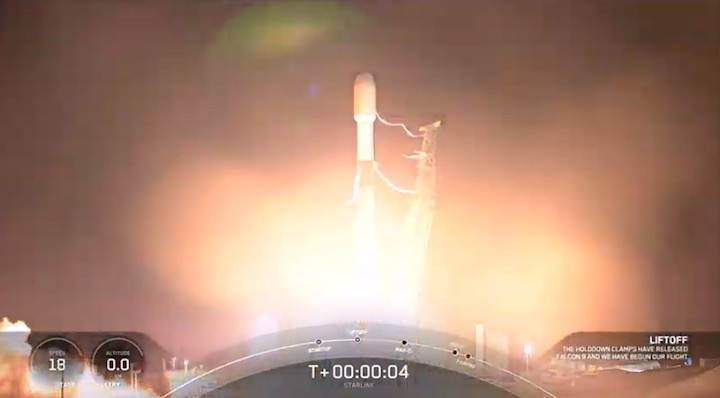
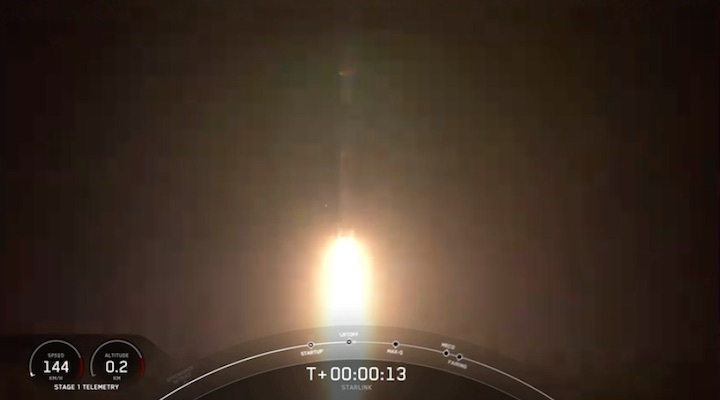

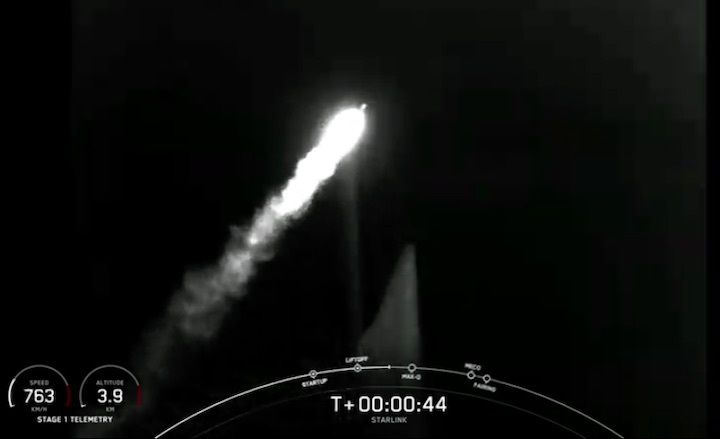

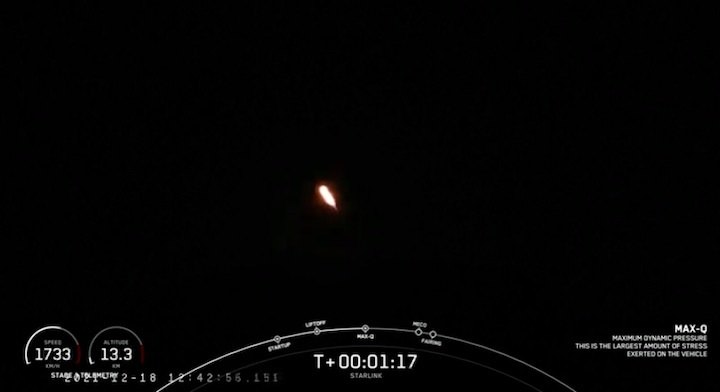
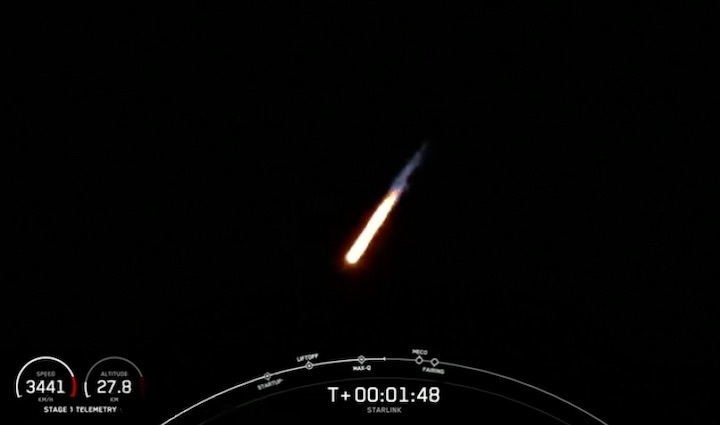
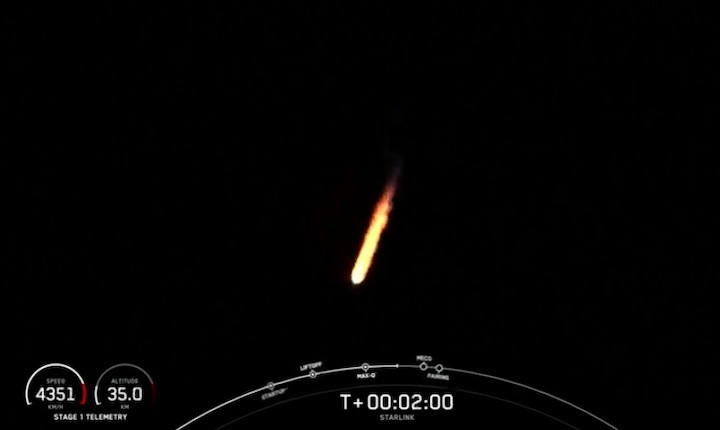
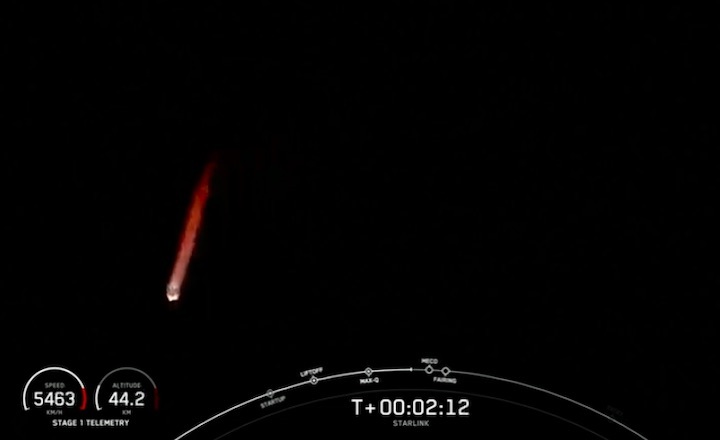
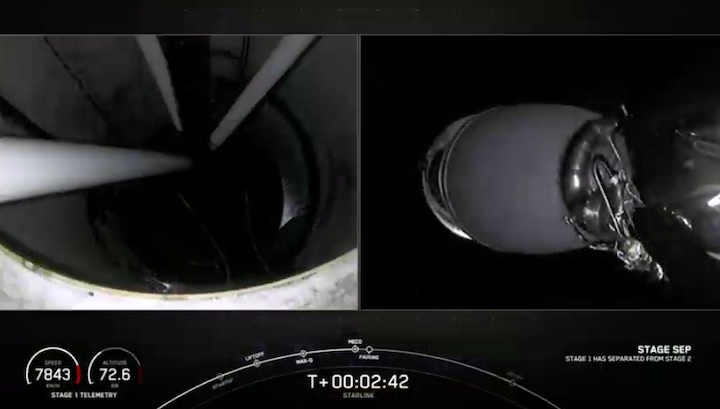
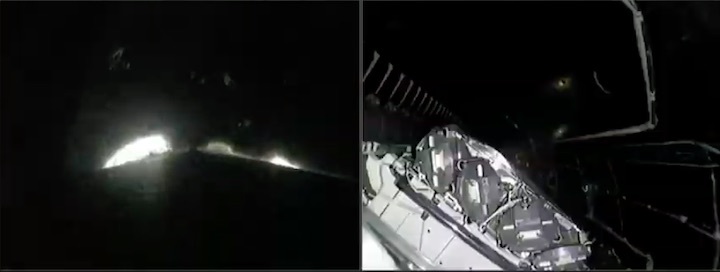

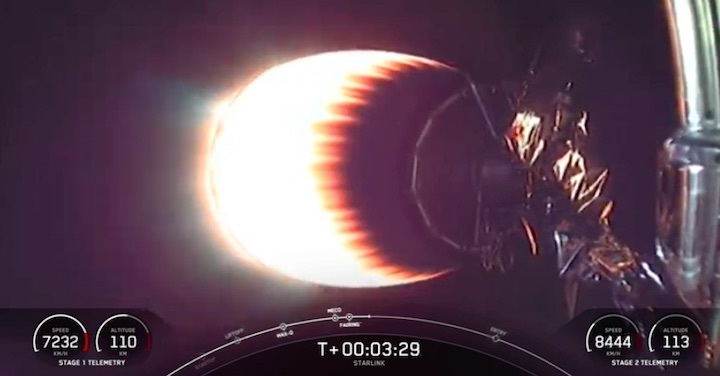
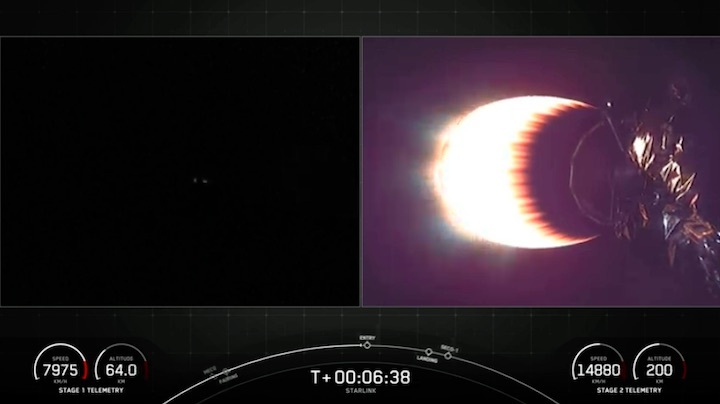
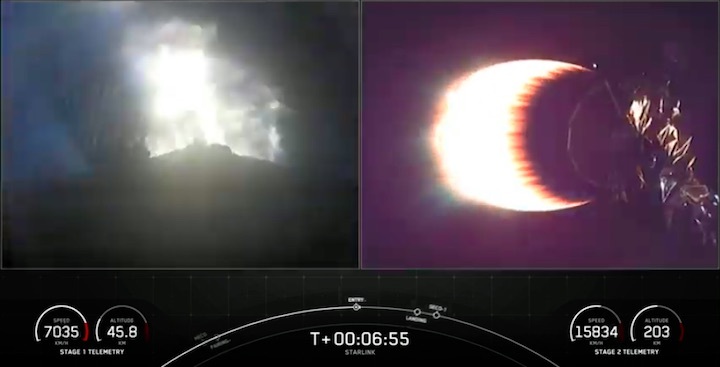
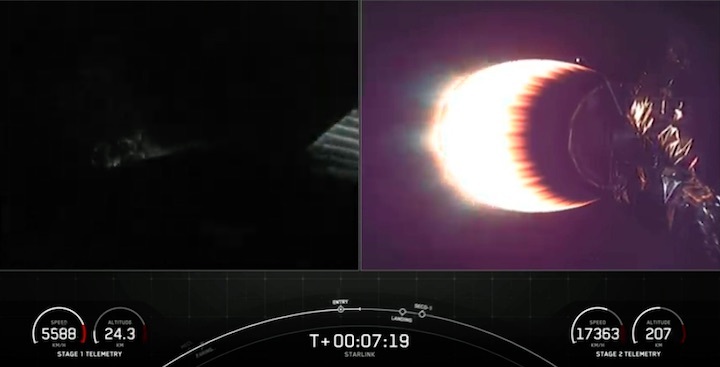

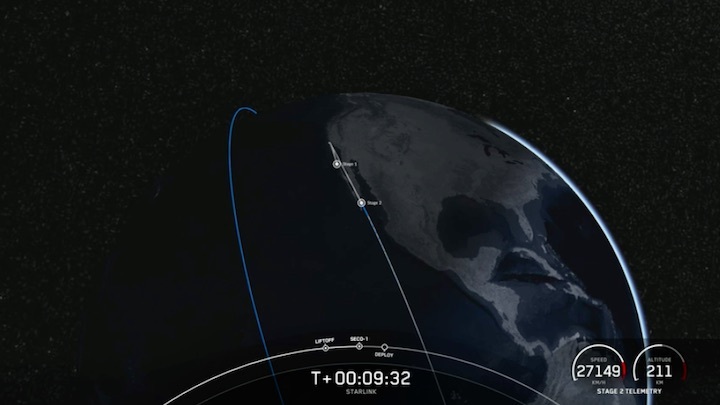
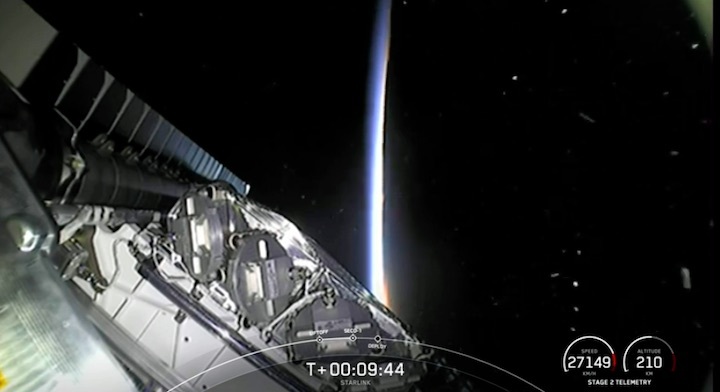
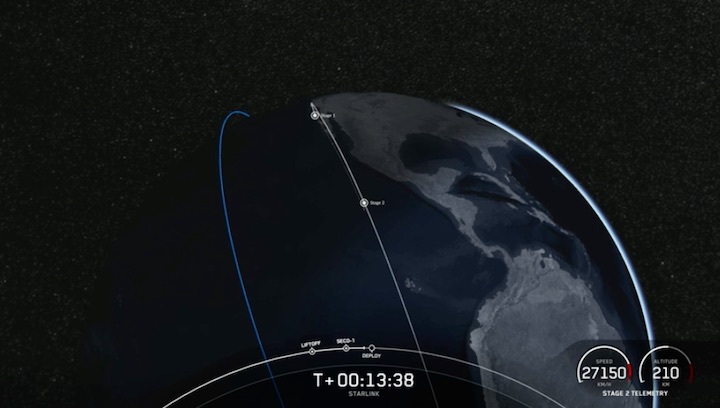
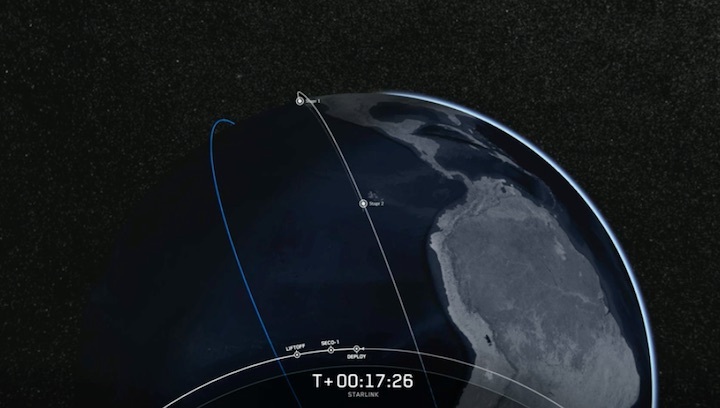
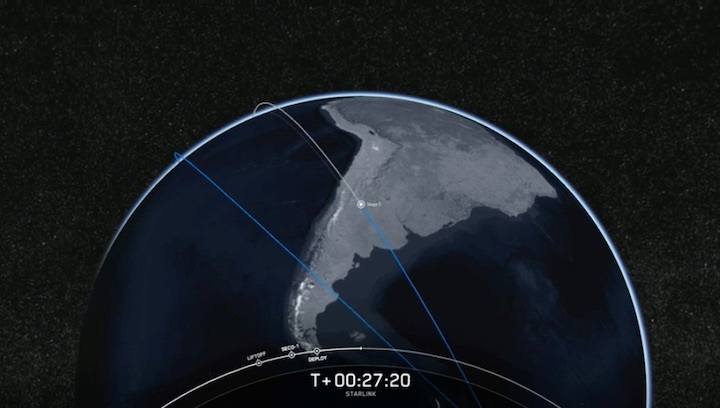
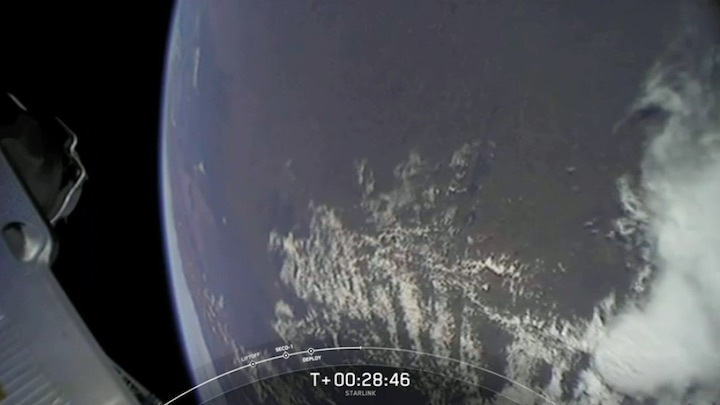
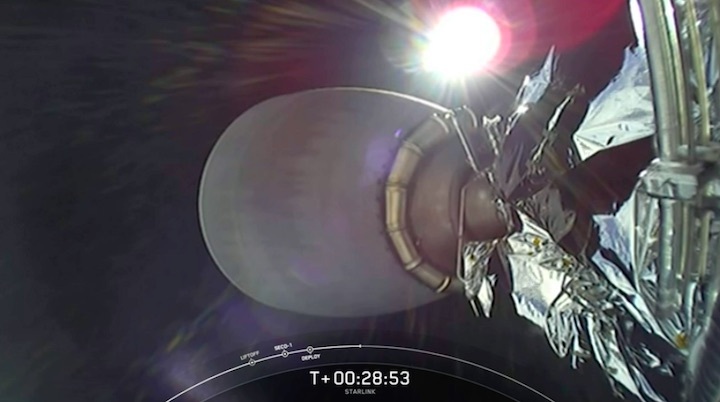


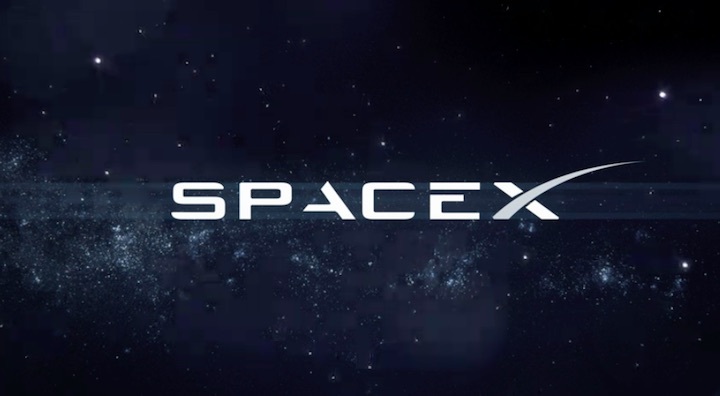
Quelle: SpaceX
+++
SpaceX Falcon 9 completes rare 53 degree inclination launch from Vandenberg
In the company’s third-to-last launch of 2021, SpaceX deployed another group of Starlink satellites to low Earth orbit early on Saturday morning. The Starlink Group 4-4 mission launched 52 Starlink satellites into a 53.22° inclination orbit at 4:41 AM PST (12:41 UTC) Saturday morning.
The mission lifted off from SLC-4E (Space Launch Complex 4 East) at Vandenberg Space Force Base in California. But despite launching from the west coast, the mission targeted the 53.2° shell – SpaceX’s first launch to a non-polar orbit from Vandenberg.
The Starlink Group X-Y nomenclature was introduced after SpaceX completed their first Starlink shell, where the X represents the shell number (1-5) and the Y represents the mission number to that shell.
Like previous Starlink missions and many Space Shuttle missions, the mission number does not represent the chronological launch order; in this case, Starlink Group 4-4 is launching ahead of Starlink Group 4-2, making this launch the third to the fourth shell.
Starlink phase one is split into five different orbital shells:
| Inclination (°) | Orbital Altitude (km) | Planes | Satellites per Plane | Number of Satellites | Currently Working Satellites | |
| Shell 1 | 53.0 | 550 | 72 | 22 | 1,584 | 1,567 |
| Shell 2 | 70.0 | 570 | 36 | 20 | 720 | 51 |
| Shell 3 | 97.6 | 560 | 6 | 58 | 348 | 13 |
| Shell 4 | 53.2 | 540 | 77 | 22 | 1,584 | 100 |
| Shell 5 | 97.6 | 560 | 4 | 43 | 172 | 0 |
(Working satellite information from Jonathan McDowell’s space report.)
Starlink shell 4 is composed entirely of Starlink v1.5 satellites, which, unlike the v1.0 satellites in shell 1, feature inter-satellite laser communication that allows the satellites to communicate directly with each other and removes the need for ground stations over areas such as the poles.
These satellite upgrades have increased the mass of each satellite, which is one of the reasons why only 52 are being launched on this mission as opposed to 60 satellites on most Starlink v1.0 missions.
The dogleg maneuver the second stage performed to get into the proper orbit further reduces the performance of the Falcon 9 and therefore the number of satellites that can be taken to this orbit from Vandenberg.
Launch
The Falcon 9 first stage supporting this mission is B1051-11, which marks the first 11th flight of a Falcon 9 booster. This surpasses the goal laid out by SpaceX CEO Elon Musk that a Falcon 9 Block 5 would be capable of 10 flights without major refurbishment and then continue to fly beyond that.
B1051-11 successfully conducted a static fire early on Friday morning UTC.
B1051 first flew on Dragon 2’s first mission to orbit, SpX DM-1 (SpaceX Demonstration Mission 1), and has since flew 10 times prior to Saturday:
| B1051 Mission | Launch Date (UTC) | Turnaround Time (Days) |
| SpaceX Demonstration Mission-1 | March 2, 2019 | N/A |
| RADARSAT Constellation | June 12, 2019 | 102 |
| Starlink v1.0 L3 | January 29, 2020 | 231 |
| Starlink v1.0 L6 | April 22, 2020 | 84 |
| Starlink v1.0 L9 | August 7, 2020 | 107 |
| Starlink v1.0 L13 | October 18, 2020 | 72 |
| SXM-7 | December 13, 2020 | 56 |
| Starlink v1.0 L16 | January 20, 2021 | 38 |
| Starlink v1.0 L21 | March 14, 2021 | 53 |
| Starlink v1.0 L27 | May 9, 2021 | 56 |
| Starlink Group 4-4 | December 18, 2021 | 223 |
At approximately T-2.8 seconds, the Falcon 9 commanded the ignition of its nine Merlin 1D engines. The engines ignite in pairs, with approximately 100 ms between each pair’s ignition, to reduce loads on the vehicle during startup.
Once the Falcon 9 detected that all engines are running nominally, the vehicle commanded the hydraulic clamps at the base of the vehicle to release, letting the vehicle lift off from the pad at T-0.
The first stage burned for two and a half minutes before shutting down its engines, again in staggered pairs to reduce loads on the vehicle. Falcon 9 then commanded stage separation, which is done by four pneumatic separators stored on the interstage, before igniting the second stage.
At this point, the second stage performed a slight dogleg, hugging the coast of Mexico so it aligns with the correct azimuth to achieve the correct inclination of the target orbit.
Meanwhile, after conducting an entry and landing burn, the first stage touched down on SpaceX’s ASDS (Autonomous Spaceport Drone Ship) Of Course I Still Love You stationed 638 km downrange. Once B1051 successfully landed, its designation changed to B1051-12.
OCISLY was moved to the landing zone by tug Scorpius and is supported by GO Quest, which recently moved from East coast ASDS support to West coast ASDS support.
Following separation, the two payload fairing halves are recovered from the water ~680 km downrange by SpaceX’s former Dragon 1 recovery vessel, NRC Quest. The fairings splash down approximately 45 minutes after launch.

NRC Quest returns to the Port of LA with the final SpaceX Dragon 1 cargo vehicle onboard. (Credit: Jack Beyer for NSF)
On Starlink Group 4-4, the second stage performed a single insertion burn; after shutdown, the stage begins spinning about Falcon 9’s x-axis. 15 minutes and 45 seconds after launch, the tension rods deploy from the Starlink stack, allowing the satellites to float away.
Shortly thereafter, SpaceX performs a deorbit burn of the second stage, followed by the usual propulsive passivation: SpaceX vents the tanks to remove as much excess fuel/oxidizer as possible to allow the second stage to reenter safely and not risk a RUD in orbit, which would create space debris.
Following this mission, SpaceX has two more launches planned for 2021. The Türksat 5B communications satellite mission to GTO (Geostationary Transfer Orbit) is scheduled for December 18 at 10:58 PM EST (03:58 UTC on December 19) from Space Launch Complex 40 at the Cape Canaveral Space Force Station in Florida.
This will be followed less than three days later on December 21 at 05:06 AM EST (10:06 UTC) by the launch of the CRS-24 cargo resupply mission to the ISS (International Space Station).
Assuming these launches go as planned, SpaceX will have launched 31 missions in 2021.
Quelle: NS

